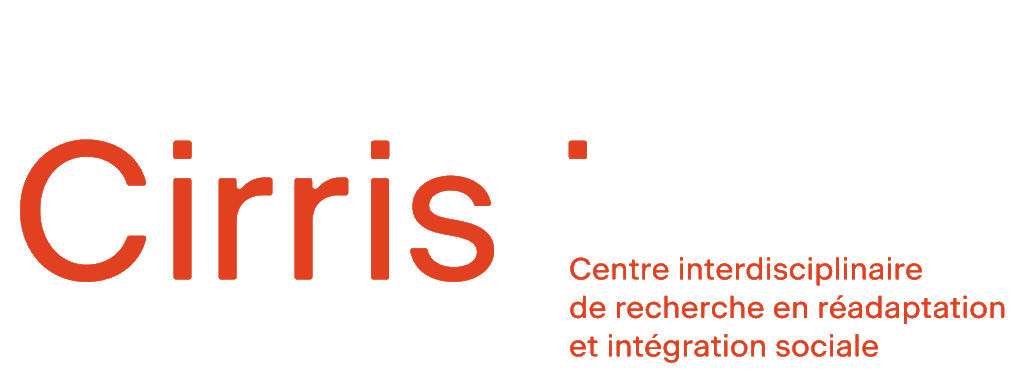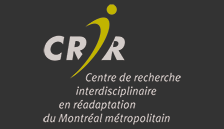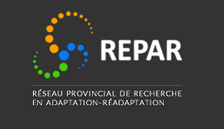How can the results be communicated to promote it?
Jacqueline Roberge-Dao, PhD candidate McGill University
Here we discuss the elements to consider in adapting knowledge to the local context to make it more compatible while maintaining the integrity of the results.
Subtitles available
LSQ Version - Quebec sign language
References
Text content
Once a project is completed, how can the results be communicated to promote it? In the previous video, we introduced the KTA framework to answer this question.
This video will focus on the three steps to the left side of the cycle. We encourage Knowledge users and stakeholders to be actively engaged in these three steps as it can enhance the relevance of knowledge to those who are not involved in the research project directly, but who may benefit from the knowledge.
When your results are ready to be communicated and you have identified a gap in the knowledge, you are ready to adapt the knowledge to your local context. This is because knowledge generated in one setting may not be suitable or relevant for your local context. Differences such as the content, expertise of the Knowledge users, the resources available in the setting, or differences in scope of practice may affect the appropriateness of the results. You may need to tailor the knowledge to make it more compatible with your context while maintaining the integrity of results. This will help improve acceptance and the likelihood of success.
Here are some guiding questions for this step.
- How does your context differ from the one in which the knowledge was originally created?
- How will you and your team identify any adaptations needed? Some examples include pilot testing, recommendations, and hosting a focus group to determine the applicability of the knowledge.
- Which components of your results are necessary and must be used as is and which parts can and should be adapted?
- How will you document how you went about adapting the knowledge?
Once you have adapted the knowledge to the local context, you are ready to assess barriers and facilitators to knowledge use. This is done so that you can address these barriers and leverage any facilitators through your KTA intervention. There are always individual, organizational and system level factors that either support or interfere with knowledge use. These factors are often interconnected. They can change a time and some may have greater influence than others. You can identify these barriers and facilitators in your setting through focus group interview, surveys, and informal discussions with stakeholders and Knowledge users.
Here’s a list of commonly reported individuallevel barriers and facilitators to knowledge uptake. Feel free to pause the video to review the list. Individual barriers may include a lack of knowledge or skills in applying the new knowledge to practice, low confidence in one’s ability to apply the knowledge, or unclear professional roles and responsibilities regarding who should take charge of applying the knowledge. At the organizational level, some barriers may include a lack of protected time for education, a lack of resources such as the material, financial or human resources allowing for a change in practice, or a culture that is resistant to change. At the systems level, some barriers include a lack of policies to support the change and a gap in legislation.
For example, health insurance regulations and unequal access to services. In order to further your understanding of the identified barriers and facilitators to knowledge uptake, you can use a determinant framework such as the Theoretical Domains Framework. The TDF is a framework which comprises 14 domains that explain why people may or may not use knowledge. You can map the barriers and facilitators that you have identified within the CDF and then align these to a specific KTA strategy.
There exists many taxonomies with various KT strategies that have been found to be effective for specific barriers and facilitators. The Behavior Change Wheel by Michion Team which is listed first. Here is a useful guide to help select KTA strategies that best align with key PDF domains. We invite you to search the literature for strategies found to be effective for the barriers and facilitators identified in your setting. These resources are a great place to start. You may be able to adopt or adapt what others have done. Common case strategies include the more traditional strategies, Journal articles and presentations which can improve knowledge but generally do not influence behavior.
Examples of more active and targeted strategies include decision support, AIDS, local Champions, and audit and feedback. You may need to combine multiple strategies together when there are multiple determinants at different levels at play. If you are interested in learning more, we invite you to take a look at another one of our videos where we go a bit more in depth on specific communication channels.
That being said, here are some key points to remember when developing your KTA intervention. You want to tailor your approach to the needs of Knowledge users and to the barriers identified in your setting. You want to increase the accessibility of the knowledge, which means bringing it to the point of decision making in formats that are equally usable by everyone. And finally, strategies that are interactive and that are delivered by a respected individual or group have a higher chance of success.
To conclude, we invite your team to search the literature using keywords relating to your research project and context. The evidence based in knowledge translation is rapidly growing and the lessons learned from others can help serve your project.




